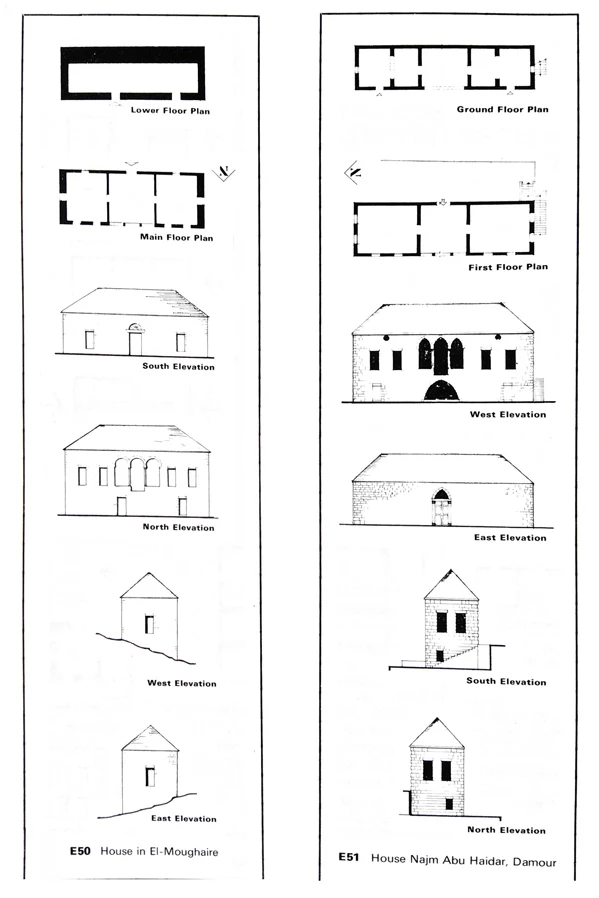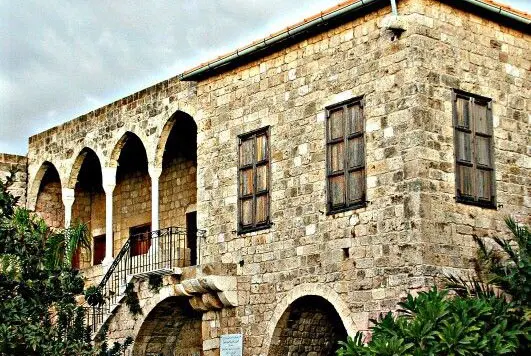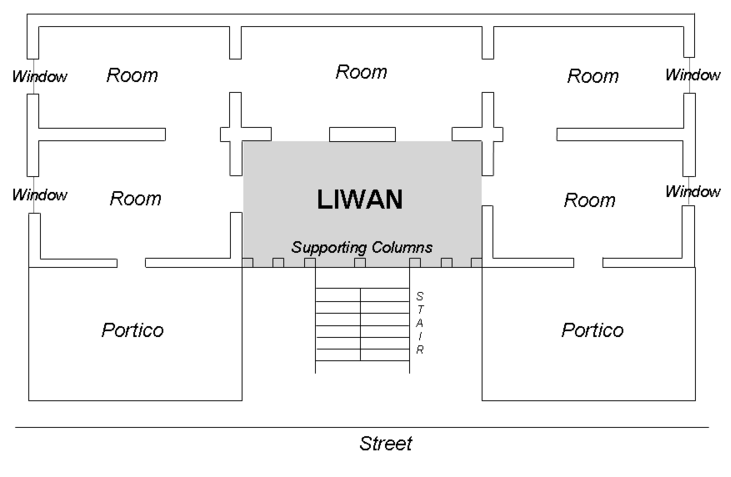Lebanese Architectural Style: 5 Design Types of Houses
5 Different Types Used in Lebanese Traditional Construction (Part 2)
In the first part of this academic study, we examined the stages that traditional Lebanese architecture underwent to reach its current state, in all its full beauty. Additionally, we explored the main influences on the design and its origins.
👉 Read the full article here.
In this blog post, I will share with you the second part of this research, which I personally participated in drafting with several colleagues at the institute while preparing for our diplomas in Architecture.
I will highlight the five major 5 different types of architectural elements used in primitive construction designs, with a presentation and an explanation to create them... Having said that, let's start over and head to the second part, with the hope that the research will receive your complete admiration and satisfaction.

We have to admit that some of those types get back to an older stage, while others appeared later, after being introduced by strange currents from the neighboring areas and settling down in the country.
➤ Refer to my previous article to learn more about external and foreign influences on Lebanese traditional architecture.
1- The rectangular-shaped design:
 |
| Scattered models of plans, layouts, and facades of houses with a rectangular plan in various areas (Photos from Architecture in Lebanon, by Friedrich Ragette) |
The overall outer walls are composed of a rectangular shape that can be divided freely from the inside or partitioned as desired. Of course, we meant by partition here, the act of creating separated rooms and walls inside the whole unit. This type of rectangular design was the most used and advanced, but was also divided into five categories:
A- Rectangular design with roofing resting on wooden columns or pillars: The distance between these varies from 2.5 to 3.00 meters. A layer of solidified soil is laid on a cradle of panels, which is held onto a type of support attached to the wooden rafter, and raised on the columns.
B- Rectangular design with soil roof carried on stone pillars: Here, the wooden columns were altered with mostly assembled stone, which gives higher ceiling construction capabilities, while the interior is still free with partitions not reaching the ceiling.
C- The rectangular earthen roof design is supported by a series of arches, which replaced the previously used set of columns.
D- Rectangular-shaped design with cross vault Dome: This architecture imposes the use of an exact stone technique based on stacked blocks over each other, in an accumulated way; The thresholds here do not carry anything, but they are related to the columns and thus can be removed. The partitioning here is also free.
E- Rectangular design with tile surface and without internal columns: Thanks to the technique of wooden structure that allows reaching a sufficient distance without the need for support. Used in the type of houses with distribution pathways in an L or U shape.
As for the outside facades of these houses, they were decorated according to the temporal influences and the financial capabilities of their owners (...)
2- The central foyer design (known as the Traditional Architecture House):
This design has the most expansion over the country, and it is defined by the central foyer from which two or more rooms are spreading around. It has an entrance on the ground floor, which leads directly to this lobby, and it has another entrance for the maids' service that gives directly to the kitchen.
The access to the first floor is located at the stairs above the service entrance. The lobby or foyer is usually divided into three sections:
- The front section
- The middle section, and
- The backward section
The lobby ends with three archways that open to the outside, preceded by the front part.
A similar design of this house exists in Byblos, dating back to the 16th century BC, and another was found in Baalbek, which had a foyer containing a mihrab (a kind of high-level niche or so, utilized mainly in the mosque to preach).
Primarily, its history dates back to the Roman era and is totally unknown to the original Lebanese traditions. Good to note that the architecture with a central foyer is a pure Lebanese characteristic if we take into consideration the three arches that symbolize the "Lebanese Traditions" in all their glory.
3- "The House with Liwan" Design:
According to the belief of Dr. Fouad Al-Bustani, a famous Lebanese writer and thinker, the word "Liwan" is a derivation of the Persian word "Diwan", used to designate the open room. As a result of the Arabs' contact with the Persians, this word was introduced to the Arabic language.
So this design consisted of a Liwan that overlooked the outside, with two additional rooms, one on each side. However, such designs are very rare except for rich people with more financial capabilities. Some designs contain an L or U-shaped Liwan, with two or three units connected to it.
An additional room will take place at the corner when this design is used with another detached one and inside the Liwan. To enlighten the inside of the house, windows were located on the outer wall.
4- The House with Patio Design:
The Patio was first used in ancient times by the Romans to illuminate the interior of the buildings. However, Lebanese homes were, in addition, decorating the outer wall, matching tradition. This design was used in fabulous palaces (such as Beiteddine and Deir El Qamar).
It was especially used in the construction of khans for foreigners' caravans in the 15th, 16th, and 17th centuries, such as the Khan El-Saboun in Tripoli (for soap manufacturing and trading) and Khan El-Fringe (for French foreigners) in Saida.
These khans were used as housing and trading places as well. The 'Souk El-Khayatin' (Tailors' Market) in Tripoli is an example of a central courtyard or Patio that has been extended to become a commercial street closed with a gate on each end.
 |
| "Khan el-Khayatine" or "Tailors' market in Tripoli, Lebanon. A live example of the beauty of ancient edifices, Photo: mounzerhamze.com |
As for the origin of the khan, it certainly derives from the similarity that exists between some of the Roman courts and motels. Later, the Persians and their caravans introduced and settled down the Khans in Lebanon.
5- The Outer Pathway Design:
 |
| The Outer Pathway Type, Photo Credits: Pinterest |
It consists of a series of two or more rooms hidden behind a closed pathway composed of one or more arches and ends with a huge block that absorbs the pressure of the side arches. Generally, this corridor is located outside along the street and is used to protect the commercial shops, and is very similar to the Khan, but sometimes it surrounds the entire house.
The benefit of this enclosed space is to protect the facade decorated with windows and doors from various unwanted acts.
6- Multiple designs:
It is a design that consists of a fusion of several methods, which is a direct result of the convergence of various traditional architecture currents in many ways when reaching the builders' hands; In other terms, every builder has their own specific ways and methods to envisage the ideas of their clients.
This engineering process was called "the hybrid" or the "mixture".
This multi-layered engineered method does not necessarily produce low-level or unqualified results. On the contrary, it helps overcome the requirements of space and climate and accommodates the family flexibly and correctly.
As for this item, it has been widely used, especially in palaces and private residences, as it is composed of different designs grouped together. The palaces of Deir El Qamar and the rich palaces, where it merged the design with a Liwan (3) and a central foyer (4), are the real evidence of it.
What is noticeable in that method of merging these designs together, starting from the Liwan style and the central yard throughout the houses and palaces, is the same. However, the most important in Lebanese traditional architecture was the decorative details that made it the primary artistic heritage and originality.
DISCLAIMER:
This was the second part of a series of Academic research about Lebanese Traditional Architecture; Thus, the information contained in this article is closely related to the previous or next ones, and cannot be separated from each other.
🛈 Want to read more? You are advised to read it sequentially to better understand and assimilate it as required. If you haven't read the previous article about the Origins, Stages, and Influences, please do it here. Thank you for taking the time to read!
.png)







